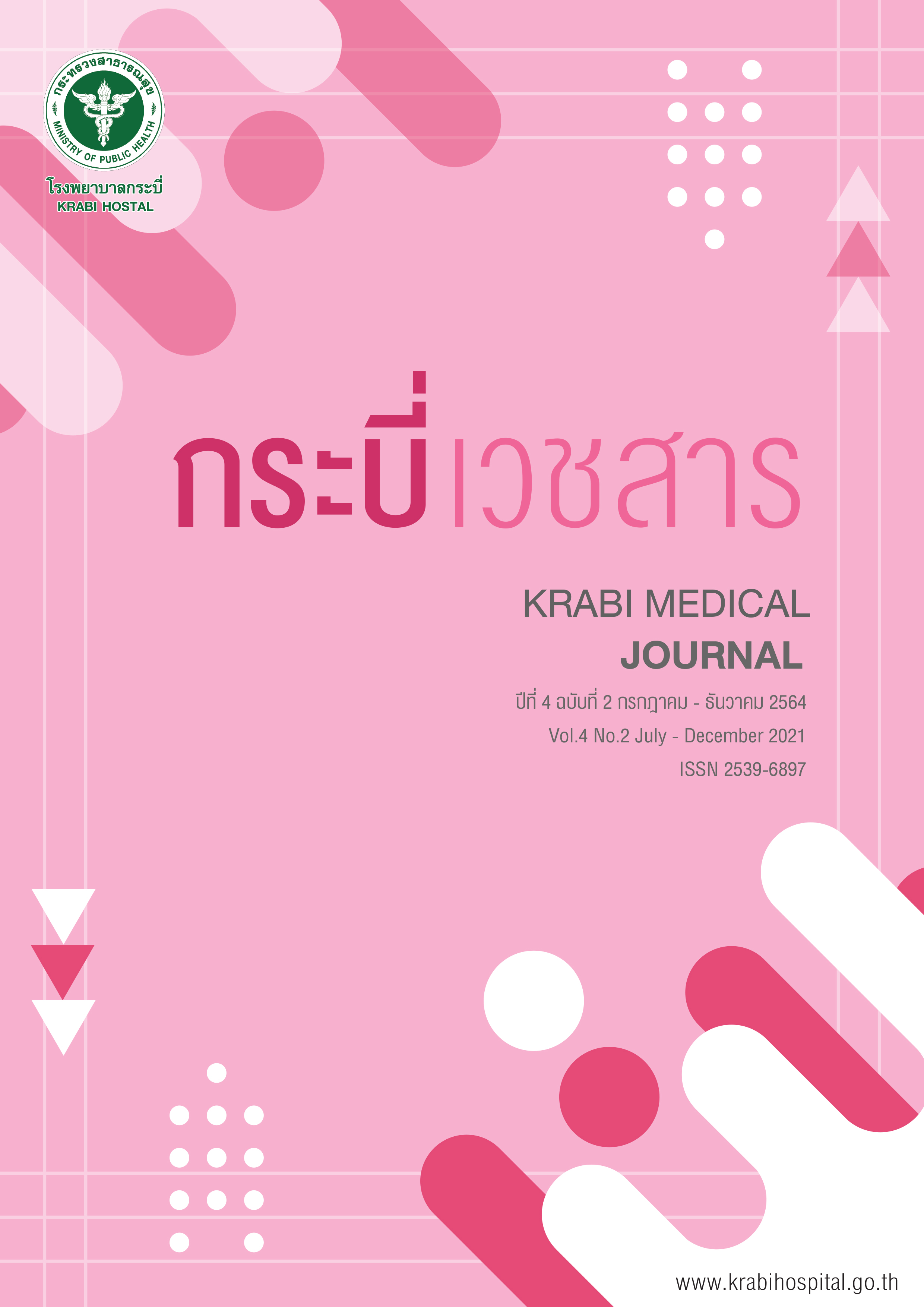Updated Acute Angle-Closure Glaucoma
Main Article Content
Abstract
Acute angle-closure glaucoma is an ophthalmic emergency caused by rapidly rising of the intraocular pressure. The etiology is from obstruction of trabecular meshwork resulting in the closure of anterior chamber angle. This condition can cause permanent visual if not treated promptly. The main risk factor is the narrow anterior chamber angle and shallow anterior chamber depth. In addition the risks of angle closure are also high among the women, the elderly, Asian population and those with hyperopia. The patients usually present with acute severe painful blurred vision, red eye, seeing rainbow halos around lights, nausea, vomiting and headache. Ocular examination shows high IOP, hazy cornea from cornea edema, shallow anterior chamber, closed anterior chamber angle, anterior lens position, fixed semi-dilatation of the pupil and occasionally, optic disc edema. The treatment in acute stage is immediate IOP reduction and reopen the angle by medication, laser and/or lens extraction with goniosynechialysis. Trabeculectomy is performed in cases of uncontrolled IOP after reopening of the angle as long term management. The evaluation and prophylaxis laser treatment are also needed to prevent the acute angle closure in fellow eyes.
Article Details

This work is licensed under a Creative Commons Attribution-NonCommercial-NoDerivatives 4.0 International License.
บทความนิพนธ์ต้นฉบับจะต้องผ่านการพิจารณาโดยผู้ทรงคุณวุฒิที่เชี่ยวชาญอย่างน้อย 2 ท่าน แบบผู้ทรงคุณวุฒิ และผู้แต่งไม่ทราบชื่อกันและกัน (double-blind review) และการตีพิมพ์บทความซ้ำต้องได้รับการอนุญาตจากกองบรรณาธิการเป็นลายลักษณ์อักษร
ลิขสิทธิ์
ห้ามนำข้อความทั้งหมดหรือบางส่วนไปพิมพ์ เว้นว่าได้รับอนุญาตจากโรงพยาบาลเป็นลายลักษณ์อักษร
ความรับผิดชอบ
เนื้อหาต้นฉบับที่ปรากฏในวารสารเป็นความรับผิดชอบของผู้เขียน ทั้งนี้ไม่รวมความผิดพลาดอันเกิดจากเทคนิคการพิมพ์
References
Tham YC, Li X, Wong TY, Quigley HA, Aung T, Cheng CY. Global prevalence of glaucoma and projections of
glaucoma burden through 2040: a systematic review and meta-analysis. Ophthalmology 2014; 121(11):
–2090.
Foster PJ. The epidemiology of primary angle closure and associated glaucomatous optic neuropathy. Semin
Ophthalmol 2002; 17(2): 50–58.
Cheng J-W, Zong Y, Zeng Y-Y, Wei R-L (2014) The Prevalence of Primary Angle Closure Glaucoma in Adult Asians: A Systematic Review and Meta-Analysis. PLoS ONE 9(7): e103222. https://doi.org/10.1371/journal.pone.0103222
Bourne RRA, Sukudom P, Foster PJ, Tantisevi V, Jitapunkul S, Lee PS, et al. Prevalence of glaucoma in
Thailand: a population-based survey in Rom Klao District, Bangkok. Br J Ophthalmol 2003; 87(9): 1069–
Quigley HA, Friedman DS, Congdon NG. Possible mechanisms of primary angle-closure and malignant
glaucoma. J Glaucoma 2003; 12(2): 167–180.
Kumar RS, Baskaran M, Chew PT, et al. Prevalence of plateau iris in primary angle closure suspects an ultrasound biomicroscopy study. Ophthalmology. 2008;115(3):430-434.
Wright C, Tawfik MA, Waisbourd M, Katz LJ. Primary angle-closure glaucoma: an update. Acta Ophthalmol. 2016 May;94(3):217-25. doi: 10.1111/aos.12784. Epub 2015 Jun 27. PMID: 26119516.
Quigley HA & Broman AT (2006): The number of people with glaucoma worldwide in 2010 and 2020. Br J Ophthalmol 90: 262–267.
Amerasinghe N, Zhang J, Thalamuthu A et al. (2011): The heritability and sibling risk of angle closure in Asians. Ophthalmology 118: 480–485.
Ramos JLB, Li Y, Huang D. Clinical and research applications of anterior segment optical coherence
tomography – a review. Clin Experiment Ophthalmol 2009; 37(1): 81–89.
Thanapaisal S, Supasai P. Acute angle closure glaucoma. Srinagarind Medical Journal 2020 35(6): 777-783
Jackson J, Carr L, Fisch B, Malinovsky V, Talley D. Optometric Clinical Practice Guideline: Care of the Patient With Primary Angle Closure Glaucoma. St Louis, MO: American Optometric Association; 1994.
Yang, M. C., & Lin, K. Y. (2019). Drug-induced Acute Angle-closure Glaucoma: A Review. Journal of current glaucoma practice, 13(3), 104–109. https://doi.org/10.5005/jp-journals-10078-1261
Saw SM, Gazzard G, Friedman DS. Interventions for angle-closure glaucoma: an evidence-based update.
Ophthalmology 2003; 110(10): 1869–1878.
Lam DS, Leung DY, Tham CC, Li FC, Kwong YY, Chiu TY, et al. Randomized trial of early phacoemulsification
versus peripheral iridotomy to prevent intraocular pressure rise after acute primary angle closure. Ophthalmology 2008; 115(7): 1134-1140.
Hirunpatravong P. Kasemsup T. Current Approaches to the Treatment of Acute Primary Angle Closure Glaucoma.Vajira Med J. 2018; 62(6): 483-488 http://dx.doi.org/10.14456/vmj.2018.53
Edwards RS. Behaviour of the fellow eye in acute angle-closure glaucoma. Br J Ophthalmol 1982; 66:576–579.
Ang LP, Ang LP. Current understanding of the treatment and outcome of acute primary angle-closure glaucoma: an Asian perspective. Ann Acad Med Singap. 2008 Mar;37(3):210-5. PMID: 18392300.


